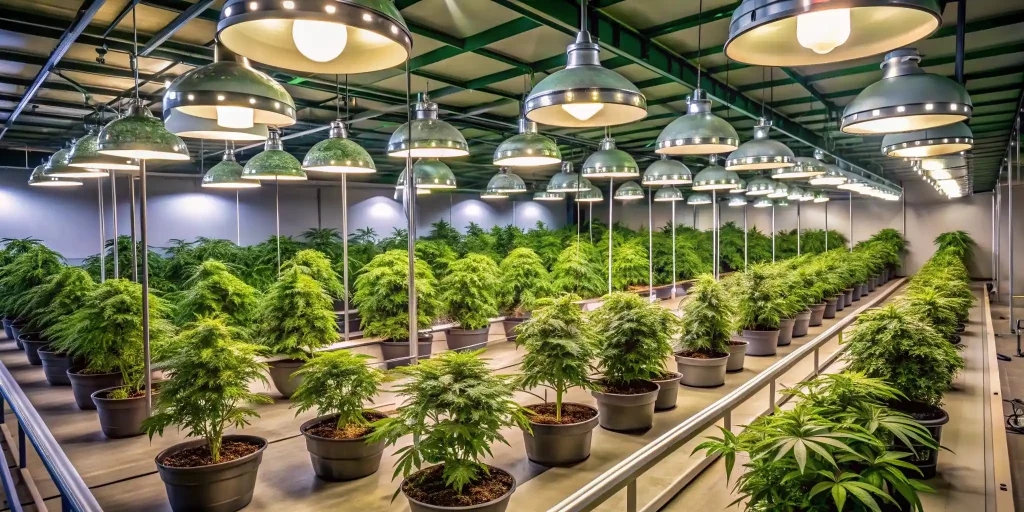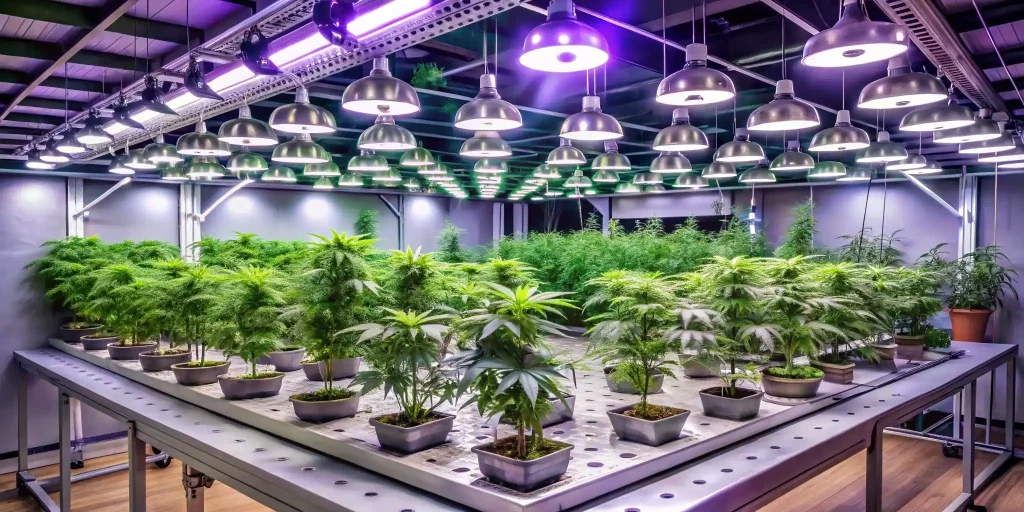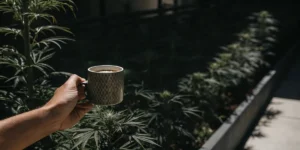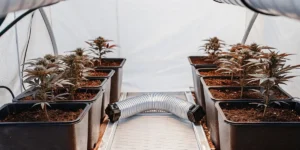The search for the best light for clones opens a world of potential for those growing cannabis clones. This article offers practical advice and clear information to help you set up optimal lighting conditions for your clones. As you read, you may find insights that change the way you nurture your plants. Stay with us to learn the secrets behind creating a thriving environment for your clones.
Our discussion covers various lighting types and factors that influence plant growth. By following these expert tips, you can ensure that your clones receive the proper care they need. Each section provides simple, useful details that even a beginner can follow. Keep reading to learn how the best light can transform your growing setup.
Introduction to Best Light for Clones
Finding the best light for clones is essential for successful cannabis cultivation. Clones need proper light intensity and the right spectrum to grow into healthy plants. When you set up a lighting system that meets these needs, you improve the overall performance of your garden. A well-lit clone area helps the plants establish strong roots and vigorous foliage, which leads to better yields and more reliable growth.
Using the best light is a decision that impacts every stage of plant development. The right lighting can help clones adapt quickly to their new environment and minimize stress during transplantation. This section explains why proper lighting is so important and how it affects plant development. With clear, simple tips, even a new grower can see significant improvements in clone performance.
Importance of Proper Lighting for Clone Growth
Proper lighting plays a major part in the healthy development of cannabis clones. The best light for clones provides a balanced spectrum that encourages root growth and leaf expansion. When clones receive the right light, they develop stronger stems and are more resilient to stress. This setup increases the chance of a successful transition from clone to mature plant while supporting overall plant health.
In addition, proper lighting helps clones overcome the challenges of low-energy conditions. The best light ensures that even in the early stages, the plants have enough energy to produce chlorophyll and thrive. This simple yet effective method reduces the likelihood of weak growth and supports a smooth, steady development process. Adequate lighting sets a firm foundation for future growth and robust yields.
Types of Lights for Clones
When choosing the best light, different lighting options can affect the growth of your plants in various ways. There are several types of lights available that work well for clone propagation. Each type offers distinct benefits and challenges, making it important to consider your specific needs. In this section, we discuss the most common lighting choices that help create the best light for clones. The two primary types of lights that many growers use are LED and fluorescent lighting. Both have been used successfully to promote healthy clone growth.
LED Lighting Options for Clones
This is popular among growers seeking the best light for clones. LED systems provide a full spectrum of light that supports both vegetative and early growth phases. They are energy-efficient, emit less heat, and often last longer than traditional bulbs. Many growers find that LED lights offer precise control over light intensity and duration, making them ideal for a controlled clone environment.
Additionally, LED lights are versatile and can be adjusted to suit the needs of your clones. With adjustable spectrum settings, you can tailor the light to provide the optimal balance for different growth stages. This adaptability means that the best light can be achieved with minimal stress on your plants. LED options combine efficiency with effectiveness, making them a top choice for many indoor growers.
Fluorescent and Other Lighting Solutions for Clones
This is another option that many growers consider when seeking the best light. Fluorescent bulbs offer a softer light output that is gentle on delicate clone tissues. They provide a good balance of blue and white light that encourages healthy root development and early leaf growth. This type of lighting is often preferred by beginners due to its ease of use and low cost.
Other lighting solutions, such as compact fluorescent lamps (CFLs) and high-output fluorescent tubes, can also serve as the best light. These lights produce a broad spectrum that helps clones transition smoothly to full vegetative growth. While they may not be as energy-efficient as LEDs, fluorescent lights still provide a reliable and cost-effective option for clone propagation, ensuring steady growth without overwhelming the plants.

Factors to Consider for Best Light for Clones
Several factors play a part in choosing the best light. The spectrum, intensity, and energy consumption of your lighting system all influence how well your clones grow. By focusing on these elements, you can create an environment that encourages rapid and healthy development. Consider what light your clones need at each stage of growth and adjust your setup accordingly to maximize plant health. The best light is one that meets your growing conditions while providing the necessary support for your plants. Pay attention to the specific requirements of your clone strain, as different plants may have slightly varied needs.
Light Spectrum and Intensity Requirements
The light spectrum and intensity are key when setting up the best light. Clones require a specific range of wavelengths that promote both photosynthesis and root development. A balanced spectrum with an emphasis on blue light is often recommended, as it supports strong vegetative growth. Additionally, the intensity of the light should be sufficient to encourage growth without causing stress or damage to the delicate tissues of clones.
Furthermore, adjusting the light intensity can make a significant difference in clone performance. The best light for clones involves not just a proper spectrum but also the correct brightness level. Too much light may cause bleaching or burning, while too little light can result in weak, spindly growth. Striking the right balance ensures that your clones grow steadily and healthily, forming a solid foundation for later development.
Energy Efficiency and Cost Considerations
When investing in the best light for clones, energy efficiency and cost are important considerations. LED lights are often favored for their lower energy consumption and longer lifespan compared to traditional lighting options. Lower energy usage means reduced electricity bills and a more environmentally friendly growing setup. The best light should offer a balance between performance and operational cost, providing efficient growth support without a high price tag.
Budget constraints may lead some growers to choose more affordable fluorescent options, which still offer a reliable light spectrum for clone propagation. However, even these options must be evaluated for energy consumption and longevity. When selecting the best light for clones, consider the long-term costs alongside the initial investment. A well-planned lighting system not only supports healthy plant growth but also helps you manage expenses effectively.
Optimizing Lighting Conditions for Clones
Optimizing the lighting conditions is key to achieving the best light for clones. Every detail matters, from the height of the light source to the duration of exposure. By fine-tuning these variables, you create an ideal environment for your clones to thrive. Adjustments to your setup can lead to better root development and more robust foliage. Paying attention to these details ensures that your clones receive the perfect amount of light at every stage.
Fine-tuning your lighting setup is a process that requires observation and small adjustments. The best light for clones can be achieved by testing different distances and exposure times until you find the optimum balance. This approach helps prevent stress on the clones and encourages a smooth transition from the cloning stage to full vegetative growth. Consistent monitoring and adjustment lead to a successful and productive clone propagation environment.
Assessing Light Intensity for Healthy Growth
Evaluating light intensity is a vital part of ensuring the best light for clones. The intensity of the light directly affects how much energy the clones can use for photosynthesis. Clones need enough light to develop strong, healthy leaves, but too much can cause damage. Using tools like a light meter can help you measure the brightness and adjust your lighting setup accordingly. The right intensity fosters rapid growth without stressing the plants.
By assessing the light intensity, you can create a balanced environment that supports steady growth. The best light for clones should offer a consistent level of brightness that encourages robust plant development. Adjusting the intensity may involve moving the light source closer or further away from the clones, ensuring that the light is evenly distributed. This careful monitoring helps maintain a stable environment where clones can flourish.
Adjusting Light Distance and Duration
Properly adjusting the distance between your lights and clones is essential to achieve the best light for clones. The distance impacts the light intensity and distribution over the plant canopy. Too close and the light can burn the leaves; too far and the clones might not receive enough energy for proper growth. Adjusting this distance with careful observation ensures that the clones are neither overexposed nor deprived of light.
In addition to distance, the duration of light exposure plays a significant part in clone development. Setting an appropriate light schedule that mimics natural conditions supports a healthy growth cycle. The best light for clones comes from a balance of light distance and duration, which provides a consistent, nurturing environment. Small changes in these factors can make a big difference in the overall health and vigor of your clones.
Selecting the Best Light for Clones
Choosing the best light for clones means comparing available options and matching them to your unique needs. Different lighting systems offer various advantages, so it is important to compare features such as energy efficiency, cost, and ease of use. The decision should be based on both performance and practicality. A well-chosen light system helps your clones grow faster and more uniformly, setting the stage for a healthy garden.¡ In selecting the best light for clones, you should consider your overall growing environment and budget. Weigh the pros and cons of each type of light to decide which one best fits your setup.
Comparing LED vs. Fluorescent Options
When selecting the best light for clones, comparing LED and fluorescent options is an important step. LED systems typically offer a broader spectrum, lower heat output, and higher energy efficiency. These benefits make LEDs a popular choice for achieving the best light for clones. However, fluorescent lights can also provide the necessary spectrum and are often less expensive initially. Both types have their advantages and may be preferred based on your specific setup and budget.
Examining the features of LED versus fluorescent lights helps you make an informed choice for the best light for clones. Consider factors such as longevity, cost per watt, and ease of installation. LEDs, for example, are known for their durability and precise light control, while fluorescent lights offer a gentler, diffused light. This comparison allows you to select a system that meets your cultivation needs and supports healthy, vigorous clone growth.
Considering Energy Efficiency and Cost
Energy efficiency and cost are significant when deciding on the best light for clones. LEDs, although sometimes more expensive upfront, consume less power and have a longer lifespan compared to fluorescent bulbs. This means that over time, the investment in an LED system can pay off in lower energy bills and reduced maintenance. The best light should deliver excellent performance while being cost-effective over the long run.
Evaluating energy efficiency and cost requires looking at both initial investment and long-term savings. The best light is not just about performance but also about practicality. Balancing energy consumption with effectiveness ensures that you have a sustainable lighting solution that supports your clones without breaking the bank. This careful consideration helps you maintain a productive growing environment with manageable operating expenses.

FAQs about best light for clones
What factors determine the best light for clones?
The best light for clones depends on several factors, including light spectrum, intensity, energy efficiency, and cost. A balanced spectrum with an emphasis on blue light supports healthy growth and strong roots. Intensity must be adjusted so that clones receive enough energy without being overexposed. Energy-efficient options like LEDs reduce operating costs, making them popular among growers. Selecting the right light ensures vigorous, steady growth in your clone propagation.
How do I know if my clones are receiving the best light ?
You can tell if your clones are receiving the best light by observing their growth and health. Healthy clones will show steady leaf development, strong stems, and minimal stress signs such as yellowing or burnt leaves. Using a light meter to monitor intensity and adjusting the light distance can help maintain optimal conditions. Consistent, vibrant growth indicates that your lighting setup is well-balanced for clone propagation needs.
Can I switch between different lighting types to achieve the best light for clones?
Yes, you can switch between different lighting types to achieve the best light. Many growers experiment with both LED and fluorescent lighting to see which one works best for their setup. Adjustments in light distance and exposure duration may be necessary during the transition. A flexible approach allows you to optimize conditions and ensure your clones receive the proper light intensity and spectrum for healthy growth and development.





